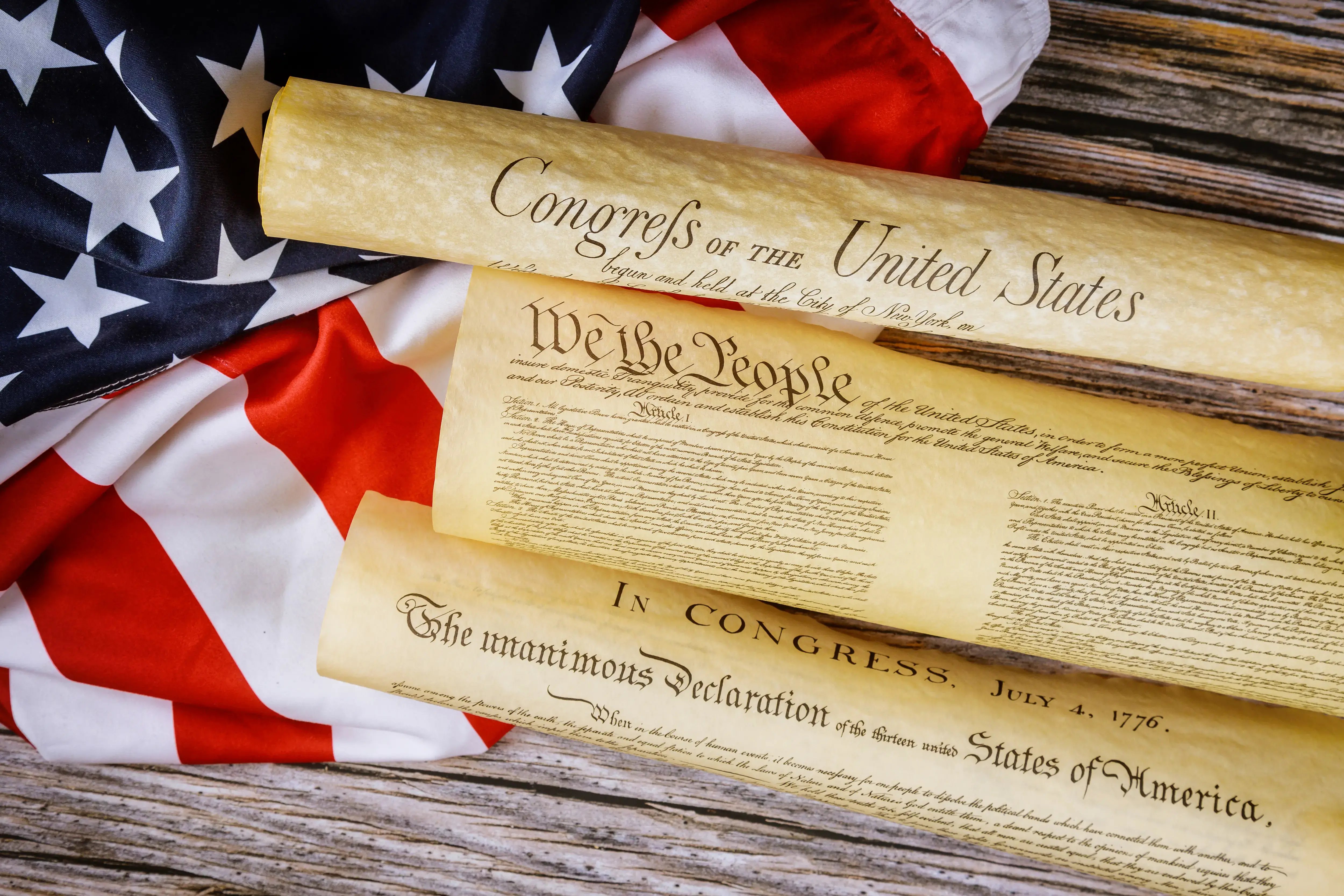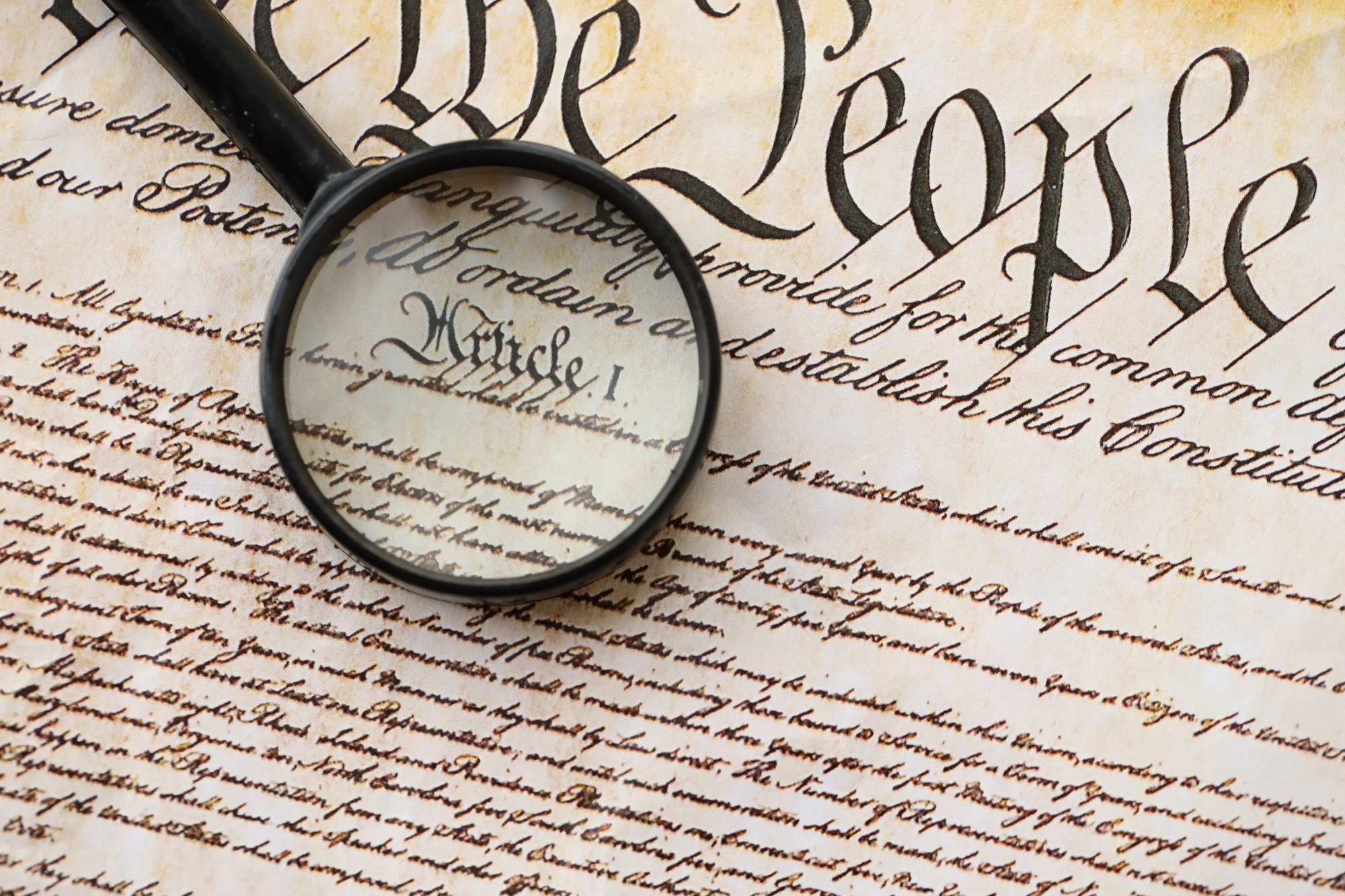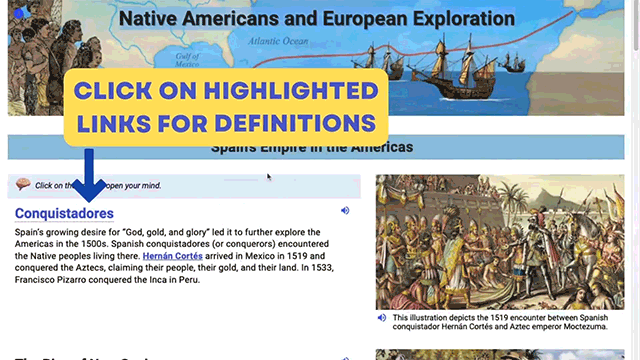Bridge Our History to Our Future
The Story of America
The Story of America is a supplemental U.S. history program for middle and high school students that immerses learners in the events, ideas, and people that shaped our nation. The program builds historical knowledge while strengthening reading, writing, and critical thinking skills.

The Challenge
Without Historical Understanding, We Can’t Build Informed Future Leaders
A strong democracy depends on citizens who understand our nation’s history. Yet many students leave school without the knowledge or critical thinking skills to evaluate information, engage in civil discourse, or participate meaningfully in civic life. Teaching history as isolated facts, without connecting it to today’s challenges, misses the chance to prepare the next generation of informed leaders.

The Solution
U.S. History Supplemental Program for Middle & High School Students
The Story of America combines history and literacy in a digital learning experience. Students explore interactive lessons, authentic videos, primary and secondary sources, detailed timelines, hundreds of historical images, and inspiring biographies. All while building the skills to read, analyze, and communicate like historians.
Our Commitment to Accuracy
Presenting a Factual, Unbiased View of U.S. History
The Story of America is built on historical accuracy and balance. Lessons draw from vetted primary sources, respected historians, and state-approved standards to give students an honest, fact-based view of our nation’s past. By avoiding political bias and focusing on evidence, the program helps students form their own informed perspectives.

Fully Correlated to State and ELA Standards
Connecting History and Literacy
Rooted in evidence-based literacy practices, the Story of America uses narrative and visuals to make history meaningful and memorable.
Correlated to State Standards
Developed by renowned historians and educators, every unit pairs rich historical content with reading and writing instruction fully correlated to national and state standards.
Building Critical Thinking
Cohesive, interactive curriculum helps school districts meet both ELA and social studies goals while enabling students to think critically about the past and its influence on today.
Help students question, analyze, and think deeply about the past.
Students engage in analysis, summarization, and research directly tied to the history they study, building the skills to think critically about the past and its relevance today.
Unit 1: The Americas Before Columbus
Unit 2: The Age of Exploration
Unit 3: The Colonization of America
Unit 4: The Road to Revolution
Unit 5: The American Revolution
Unit 6: The New Nation
Unit 7: The Challenges of a Young Nation
Unit 8: The Rise of the New Republic
Unit 9: The Age of Jackson and the Common Man
Unit 10: Growth and Division
Unit 11: The Civil War
Unit 12: Reconstruction
Unit 13: Social Studies Skills
Unit 14: The US Constitution

Review Unit: Pre-Columbian to Reconstruction
Unit 1: Reconstruction
Unit 2: The Nation Expands
Unit 3: The Impact of Industry
Unit 4: The Gilded Age
Unit 5: The Progressive Era
Unit 6: America and the Age of Empires
Unit 7: World War I
Unit 8: From the Roaring Twenties to Black Tuesday
Unit 9: The Great Depression and the New Deal
Unit 10: World War II
Unit 11: The Cold War and Prosperity
Unit 12: The Sixties and Seventies
Unit 13: The End of the American Century
Unit 14: Social Studies Skills
Unit 15: The US Constitution

By the Numbers
Impact Across the Nation
School districts using the Story of America see higher student engagement, stronger comprehension scores, and improved U.S. history outcomes.
31 Units
Covering U.S. history from pre-Columbian to today
2 Languages
English & Spanish
100%
Standards-Aligned with national and state frameworks
How to Access the Program
Available Exclusively Through State Partnerships
The Story of America is offered only through partnerships with state education agencies. In states with a partnership, school districts can access the program at no cost. By working at the state level, we provide districts with high-quality resources at scale along with consistent training and support.

Why Choose the Story of America
Correlates with State Standards
Every lesson correlates with ELA and Social Studies State Standards.
Factual Portrayal of US History
Teaches the unvarnished truth of US history while improving grade-level reading comprehension.
Available in Spanish and English
Provides a dual-language feature, offering content in both Spanish and English.
Prepares Students for State Assessments
Comprehensive lessons and content equip students with the knowledge and skills needed to excel on state assessments.
Accessible Content and Experience
Visual, auditory, and contextual features enhance the learning experience for every learner.
Skill-Building Content Modules
Designed for middle and high school students, activities include analysis, summarization, and research to deepen understanding.
New for This School Year
History's Court, Powered by AI
History's Court is an interactive, AI-powered experience where students interview opposing historical figures, evaluate different perspectives, and defend their stance in a courtroom-style debate.
I love it. Use it as a resource for our projects, and daily lessons and content learning. Utilize the content for our testing and teaching TEKS. I think it is an outstanding program and would like to use it more.
They read/listened to it 20-30 minutes. They retained the knowledge. For my ELL class, I had my Spanish speakers listening to the lesson in Spanish while I was teaching from the reading in English. It was fantastic. They FINALLY looked engaged and excited.
It has been designed in easily, digestible chucks for students. The images and videos enhance the content.
Ready to Bring U.S. History to Life in Your Classrooms?
Connect with a Story of America expert to discover how our program helps students master U.S. history and grow into informed, engaged citizens.
Frequently Asked Questions
-
How can my district get The Story of America?
The Story of America is available exclusively through state education partnerships. We work directly with state agencies to align content to local standards and provide equitable access, training, and support to all participating districts.
-
What grades is the Story of America designed for?
The program is built for middle and high school students, offering grade-appropriate units, activities, and assessments aligned to state and national standards.
-
How does the Story of America support both history and literacy instruction?
Each lesson integrates reading, writing, and critical thinking with historical content, helping school districts meet ELA and social studies standards.
-
Is the program aligned with my state’s standards?
Yes. All units are fully aligned to national social studies standards, as well as individual state frameworks for history and ELA.
-
Does it work for English learners and diverse classrooms?
Absolutely. The program is available in English and Spanish, includes audio supports, and is designed to meet the needs of varied learners.
-
Can I use The Story of America alongside my existing curriculum?
Yes. The Story of America is a supplemental program designed to enhance, not replace, your current resources.
-
How is student progress tracked?
The program includes embedded assessments, automated scoring, and role-based dashboards that provide real-time insights into student understanding and growth.
-
What is the time commitment for each lesson?
Lessons are modular and can be completed in 20–40 minutes, allowing for flexibility in daily or weekly planning.
-
Is professional development available?
We offer training and ongoing support to help school districts integrate the Story of America seamlessly into their classrooms.
-
How does the Story of America ensure a factual and unbiased portrayal of U.S. history?
The program was developed with historians and educators. It uses primary sources and verifiable evidence to present a balanced, fact-based view. Lessons avoid political bias and focus instead on helping students critically analyze history from multiple perspectives.
